#AWS Amazon Web Services
Explore tagged Tumblr posts
Text
How Leading Companies Are Leveraging Infrastructure as a Service (IaaS)
As businesses increasingly turn to digital solutions, Infrastructure as a Service (IaaS) has emerged as a vital component for modern enterprises. By utilizing cloud platforms, companies can enhance their agility, scalability, and cost-efficiency. This article explores infrastructure as a service examples and how leading companies are leveraging IaaS providers to drive innovation and growth.
What is Infrastructure as a Service (IaaS)?
IaaS is a cloud computing service model that delivers virtualized computing resources over the internet. It enables businesses to rent infrastructure components like servers, storage, and networking, rather than investing in physical hardware. This flexibility allows companies to scale resources according to their needs and focus on core activities without the burden of managing IT infrastructure.
1. Netflix: Enhancing Scalability and Performance
Cloud Infrastructure Examples
Netflix, the global streaming giant, leverages IaaS to manage its vast content library and ensure seamless streaming experiences for millions of users worldwide. By using IaaS providers like Amazon Web Services (AWS), Netflix can quickly scale its infrastructure to handle peak loads, such as new releases or seasonal spikes in viewership. This scalability ensures high performance and availability, crucial for maintaining customer satisfaction.
2. Airbnb: Optimizing Resource Management
IaaS Use Cases
Airbnb, the popular online marketplace for lodging, utilizes IaaS to manage its global operations. The company employs cloud services examples like dynamic scaling to match infrastructure resources with fluctuating demand. During peak travel seasons or significant events, Airbnb can scale up its infrastructure to accommodate increased traffic, ensuring reliable service and user experience.
3. Slack: Ensuring Data Security and Compliance
Cloud Platforms
Slack, a leading collaboration platform, relies on IaaS for data security and regulatory compliance. By partnering with IaaS providers like Google Cloud Platform (GCP), Slack benefits from advanced security features, including encryption and compliance with industry standards such as GDPR and HIPAA. This ensures that sensitive business communications remain secure and compliant with regulations.
4. Pinterest: Enhancing Development and Innovation
IaaS Providers
Pinterest, a visual discovery and bookmarking platform, leverages IaaS to accelerate development cycles and foster innovation. Using cloud platforms like Microsoft Azure, Pinterest provides its developers with the tools and resources needed to build, test, and deploy new features rapidly. This agile development environment supports continuous improvement and innovation.
5. Spotify: Delivering Seamless Music Streaming
Cloud Infrastructure Examples
Spotify, the music streaming service, utilizes IaaS to manage its extensive music catalog and deliver high-quality streaming experiences. By using cloud platforms like Google Cloud, Spotify ensures that users can access their favorite music anytime, anywhere. The scalable infrastructure allows Spotify to handle millions of concurrent users without compromising performance.
6. Coca-Cola: Supporting Global Operations
IaaS Use Cases
Coca-Cola, a global beverage leader, uses IaaS to support its worldwide operations. By partnering with IaaS providers like IBM Cloud, Coca-Cola manages its supply chain, customer data, and digital marketing initiatives across different regions. This integrated approach enables Coca-Cola to maintain consistency and efficiency in its global operations.
7. Twitter: Managing Real-Time Data
Cloud Services Examples
Twitter, the social media platform, leverages IaaS to manage and process vast amounts of real-time data. Using cloud platforms like AWS, Twitter can handle high volumes of tweets, mentions, and user interactions with minimal latency. This capability is crucial for delivering real-time updates and maintaining user engagement.
8. General Electric: Facilitating Industrial IoT
IaaS Providers
General Electric (GE) uses IaaS to power its Industrial Internet of Things (IIoT) initiatives. By utilizing cloud platforms like Microsoft Azure, GE connects industrial equipment and collects data to optimize performance and predict maintenance needs. This data-driven approach enhances operational efficiency and reduces downtime.
9. eBay: Ensuring High Availability
Cloud Infrastructure Examples
eBay, the e-commerce giant, employs IaaS to ensure high availability and reliability for its global marketplace. By using IaaS providers like AWS, eBay can quickly scale its infrastructure to handle large volumes of transactions and user interactions. This reliability is essential for maintaining trust and satisfaction among buyers and sellers.
10. Zoom: Supporting Remote Communication
IaaS Use Cases
Zoom, the video conferencing service, relies on IaaS to support its global user base. By leveraging cloud platforms like Oracle Cloud, Zoom ensures high-quality video and audio communication, even during peak usage times. This scalability and reliability are critical for supporting remote work and virtual events.
Conclusion
Leading companies across various industries are leveraging Infrastructure as a Service (IaaS) to enhance scalability, performance, security, and innovation. By partnering with top IaaS providers and utilizing cloud infrastructure services, these businesses can stay agile, competitive, and responsive to market demands. Whether it's optimizing resource management, ensuring data security, or supporting global operations, IaaS provides the flexibility and power needed to drive business success in the digital age.
#aws web services#saas#aws amazon web services#data centres#iaas infrastructure as a service#aws cloud computing#azure cloud#saas services#platform as a service examples#saas cloud#IT infrastructure as a service#iaas as a service#infrastructure as a service examples#information technology IT infrastructure#IT and infrastructure#aws global infrastructure#azure services#platform as a service#infrastructure as a cloud#IT infra service#data center and cloud computing#cloud based data centers#aws infrastructure#aws datacenter#azure cloud services#amazon web services in cloud computing#platform as a service in cloud computing examples#digital infrastructure#microsoft azure cloud#aws connect
1 note
·
View note
Text
Bandai Explains Why They Adopted AWS for Tamagotchi Uni and Why NFC Didn’t Work

The partnership of Tamagotchi and Amazon Web Services is so interesting, and we love hearing more about it. Yuri Okamoto of the Bandai planning team of the Toy Division Global Toy Planning Department, who was in charge of the planning and development of the Tamagotchi Uni at Bandai, and Daisuke Sakammoto of the technical design team of the same department explain further why exactly Bandai adopted AWS for the new Tamagotchi Uni.
Mr. Okamoto explains that the first connectivity method was introduced in 1997 with the Tamagotchi Osutchi and Mesutchi. The purpose of this connectivity was for one character to be able to cross over into the other device.

Then in March of 2004, after the explosive boom of Tamagotchi calmed down, the Tamagotchi Plus model was introduced with new infrared communication. The infrared technology functionality was the exact function that was tailored in the heyday of feature phones in Japan, and it was possible not only to connect two Tamagotchi’s together, but also to mobile phones.

Newer models also introduced different types of connectivity, including NFC with the Tamagotchi 4U in 2014. NFC was aimed to allow Tamagotchi’s to connect together by touching the devices together. However, the communication speed of NFC was not very fast, so it did not become a user experience the communication would end when touched.

Tamagotchi M!X back in 2016 brought back the infrared connectivity. The Tamagotchi Meets back in 2018 then introduced Bluetooth connectivity on top of the infrared functionality which enable the ability to connect to a smartphone or tablet to use the application.
The Tamagotchi Smart which was released in the midst of the COVID-19 global pandemic where contact with people was suppressed. The Tamagotchi Smart allowed caretakers to interact with their Tamagotchi with the use of voice and touch, along with wearing your Tamagotchi Smart right on your wrist.

Mr. Okamoto then discusses how the Tamagotchi demand has been higher overseas than in Japan. The Tamagotchi Uni was sought out to unify the design and content of play sot hat Tamagotchi users around the world can enjoy the same Tamagotchi Uni globally.
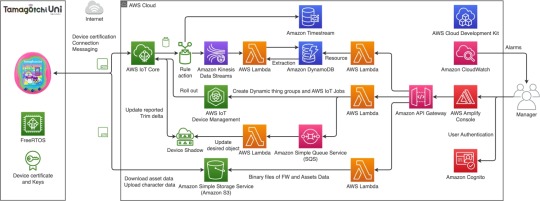
The Tamagotchi Uni also introduced Wi-Fi for the first time. This enables the new Tamaverse feature, software updates, and more. There are a wide range of functions that should be independently implemented in the cloud infrastructure to realize the concept of the Tamagotchi Uni. AWS has great infrastructure capabilities and a range of sample documents to advance development.
Monoist asks if future models after the Tamagotchi Uni will feature cloud connectivity. Mr. Okamoto responds that there alway needs to be the core play that has always been featured in the Tamagotchi, and Bandai will consider how to do that with both hardware and software. So the cloud is not necessarily a requirement for the next generation model.
#tamapalace#tamagotchi#tmgc#tamatag#virtualpet#bandai#jp#yuriokamoto#yuri okamoto#daisukesakamoto#daisuke sakamoto#monoist#aws#amazonwebservices#amazon web services#nfc
27 notes
·
View notes
Text
2. Juli 2024
Mein Backup ist weg, aber wenigstens auf eine preisgünstige Art
Seit ein paar Wochen habe ich eine neue Kreditkarte. Jetzt bekomme ich eine Nachricht, dass 35 Cents durch "AWS EMEA" nicht abgebucht werden konnten, weil die Kreditkartendaten nicht mehr stimmen. Das sagt mir nichts. Eine Suche im Internet ergibt, dass es sich um Amazon Web Services handelt. Das sagt mir immer noch nicht sehr viel. Habe ich die mal benutzt?
Auf gut Glück gebe ich "aws.amazon.com" ein und versuche mich dort mit meiner Mailadresse einzuloggen. Noch bevor ich zur Passwortabfrage vorgedrungen bin, teilt mir die Seite mit, dass ich bitte "Passwort vergessen" wählen und mir ein neues Passwort vergeben soll. Ich klicke auf "Passwort vergessen" und bekomme eine Mail mit einem sehr langen, nicht anklickbaren Link. Ich kopiere den Link in meinen Browser und kann mir dann ein neues Passwort aussuchen. Aber nicht irgendeines, sondern eins mit ... ich ignoriere die Details, öffne meinen Passwortmanager und lasse den ein neues Passwort generieren. Das gebe ich zwei Mal ein. Dann kann ich mich einloggen, bin aber immer noch nicht drin. Erst muss ich meine Mailadresse verifizieren, das heißt, eine weitere Bestätigungsmail abwarten und auf den Link darin klicken. Dann muss ich meine Telefonnummer verifizieren. Dazu bekomme ich einen sechsstelligen Zahlencode und einen automatischen Anruf. Eine nicht ganz menschlich klingende Stimme fordert mich zur Eingabe des Zahlencodes auf. Jetzt kann ich mich einloggen und nachsehen, wofür die 35 Cent abgebucht werden sollten.
Auf dem Handy ist die Ansicht so defekt, dass ich gar nichts herausfinden kann. Ich logge mich auf dem Laptop ein und erfahre, dass ich erst meine Mailadresse ein zweites Mal verifizieren soll. Das kann ich aber auch überspringen und irgendwann in den nächsten 30 Tagen noch erledigen.
Ich zahle offenbar für den "Amazon Simple Storage Service":

Aber was ist drin in dieser Storage? Auf der Seite "Storage" kommt mir nichts bekannt vor.
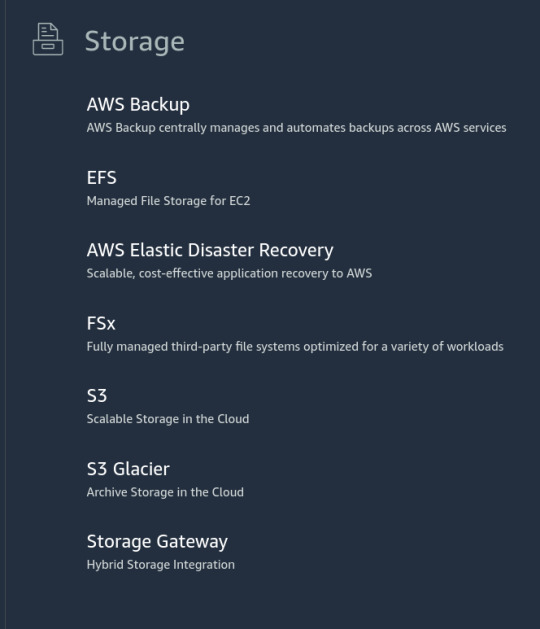
Am ehesten vielleicht S3, denke ich, denn der Rest kommt mir noch unbekannter vor. Unter S3 besitze ich tatsächlich einen "General Purpose Bucket". Das klingt praktisch.
Mein Eimer hat einen langen kryptischen Namen. Darin ist ein Ordner "default". Im Ordner "default" sind viele andere Ordner mit langen kryptischen Namen. Keiner davon enthält irgendwas Verständliches.
Vielleicht kann ich ja herausfinden, seit wann ich diese 35 Cent im Monat bezahle, und den Grund so identifizieren, denke ich. Aber die Übersicht über die Abrechnungen reicht nur ungefähr ein Jahr zurück.
In meinem Passwortmanager hat sich in der Zwischenzeit ein vager Zusammenhang zwischen Amazon AWS und JungleDisk ergeben, einem Cloud-Backup-Ding, das ich in einer sehr grauen Vorzeit einmal benutzt habe. Es ist so lange her, dass es das Techniktagebuch noch nicht gab, weshalb ich nirgends nachlesen kann, was ich eigentlich damit gemacht habe. JungleDisk ist inzwischen verkauft oder umbenannt worden. Die Seite www.myjungledisk.com weigert sich, mich zu erkennen.
Ich sehe in meinen Mails nach. Offenbar habe ich mich bei JungleDisk 2010 angemeldet und 2017 mal eine Nachricht über Änderungen bekommen. Diese Nachricht enthält einen anderen Link, unter dem ich mich auch wirklich einloggen kann.
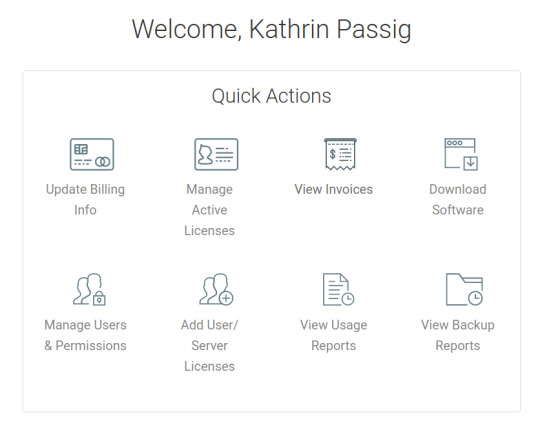
Der Menüpunkt "Online Disks" sieht vielversprechend aus.
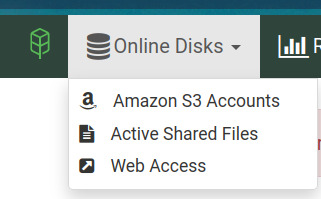
Aber alle Punkte führen nur zu der Aufforderung, mir einen Amazon S3 Account zuzulegen (habe ich doch schon) oder den Support zu kontaktieren (will ich nicht).
Keine Ahnung, was in diesem Backup drin war und ob es sich um einzigartige, wertvolle, unwiederbringliche Daten handelt. Schon für das Techniktagebuch würde ich eigentlich gern weiterforschen, aber alle weiteren Schritte wirken noch viel verwickelter als die bisherigen und ich werde schon beim Drübernachdenken ganz lustlos. Ich glaube, ich lasse alles so, wie es jetzt ist. Irgendwann wird wegen der nicht bezahlten 35 Cent irgendwas gekündigt werden, und dann werde ich auf das unbekannte Backup noch weniger zugreifen können als jetzt schon.
(Kathrin Passig)
11 notes
·
View notes
Text
PeopleSoft Cedar Consulting: Revolutionizing Enterprise Solutions with Expertise and Innovation
In the world of enterprise software solutions, PeopleSoft remains a key player, providing organizations with robust tools for managing human resources, finances, supply chains, and more. However, to fully harness the power of PeopleSoft and tailor it to a company's unique needs, businesses often turn to specialized consulting services. One such provider making waves in this space is Cedar Consulting, a firm that offers top-tier expertise in PeopleSoft and helps organizations optimize their use of this powerful software suite.
Understanding PeopleSoft: A Quick Overview
PeopleSoft, originally developed by PeopleSoft Inc., is a comprehensive suite of applications that help businesses manage a variety of operations, from human resource management to financials, supply chain management, and customer relationship management. PeopleSoft has evolved over time, being acquired by Oracle in 2005, but it remains one of the most widely used ERP (Enterprise Resource Planning) solutions worldwide.
Organizations across various sectors continue to rely on PeopleSoft for its scalability, flexibility, and advanced features. However, to ensure that the platform is implemented effectively and aligns with specific business goals, PeopleSoft consulting has become a critical component for success.
What Makes Cedar Consulting Stand Out?
Comprehensive PeopleSoft Services Cedar Consulting offers a wide range of services centered around PeopleSoft, including:
Implementations: Cedar assists organizations in smoothly deploying PeopleSoft applications, ensuring that the systems are configured to meet specific organizational requirements.
Upgrades: As PeopleSoft continually evolves, businesses need to stay up to date with the latest versions and features. Cedar provides seamless upgrade services to help clients transition to newer versions without disrupting business operations.
Customization and Configuration: Cedar’s experts understand that each business has unique needs. They customize PeopleSoft applications to ensure they work optimally for individual clients, improving functionality and integration with other systems.
Support and Optimization: Cedar’s consultants offer ongoing support to help businesses maximize their PeopleSoft investments, addressing issues as they arise and optimizing system performance over time.
Integration: PeopleSoft often needs to integrate with other enterprise systems. Cedar provides integration services to ensure smooth data flow and seamless operations across different software platforms.
Expert Knowledge and Experience Cedar Consulting distinguishes itself through its team of professionals with extensive PeopleSoft experience. Whether it's implementing new PeopleSoft modules, upgrading existing systems, or troubleshooting complex technical issues, Cedar’s consultants bring a wealth of expertise to the table. This deep knowledge ensures that clients receive not only a working solution but one that is efficient, scalable, and cost-effective.
Tailored Solutions One of Cedar Consulting's core strengths is its ability to provide customized solutions. They take the time to understand the unique challenges faced by each client and design strategies that align with specific business objectives. Cedar is particularly adept at making complex PeopleSoft systems more user-friendly and efficient, helping businesses achieve their full potential.
Proven Track Record of Success Cedar Consulting has built a reputation for delivering results. Their success stories span a wide range of industries, from higher education and healthcare to financial services and government. Organizations trust Cedar for their proven ability to optimize and enhance PeopleSoft systems, driving both operational efficiency and strategic growth.
Focus on Long-Term Relationships Cedar Consulting is not just about implementing a system and walking away. Their approach centers on building long-term relationships with clients. They provide ongoing support and consulting, ensuring that PeopleSoft systems continue to meet the evolving needs of the business. This commitment to customer success is what makes Cedar a preferred consulting partner for many organizations.
Benefits of Partnering with Cedar Consulting for PeopleSoft Solutions
Enhanced Efficiency and Productivity Cedar’s deep expertise ensures that businesses get the most out of their PeopleSoft systems, helping streamline workflows and improve productivity. Whether it’s simplifying user interfaces or automating routine tasks, Cedar’s solutions enable organizations to operate more efficiently.
Reduced Costs By optimizing the existing PeopleSoft system, Cedar helps businesses reduce operational costs. Moreover, their experience with system upgrades and integrations ensures that businesses avoid costly mistakes and delays in deployment.
Scalability and Flexibility Cedar Consulting’s solutions are designed to scale with the organization as it grows. Their custom solutions ensure that businesses can add new functionalities or integrate with new systems as needed, without requiring major overhauls.
Improved Decision-Making Cedar’s data-driven approach helps organizations leverage PeopleSoft’s robust reporting and analytics features. By improving access to critical data, businesses can make more informed decisions, whether it’s about financial planning, human resources, or supply chain management.
Ongoing Support Cedar Consulting provides continuous support to its clients, ensuring that their PeopleSoft systems stay up to date, secure, and effective over time. This proactive support helps organizations avoid costly downtime and disruptions.
Conclusion
As businesses continue to navigate the complexities of modern enterprise operations, the need for specialized PeopleSoft consulting services becomes ever more apparent. Cedar Consulting has established itself as a trusted partner for organizations seeking to unlock the full potential of their PeopleSoft systems. With a focus on tailored solutions, expert knowledge, and long-term customer success, Cedar Consulting stands out as a leader in the PeopleSoft consulting space, driving operational efficiency and delivering lasting value for clients.
#amazon web services#amazon sierra#oracle cloud consulting#aws cloud consultant#oracle consulting services#oracle public sector cloud#managed cloud services#oracle consulting#peoplesoft aws hosting#top oracle implementation partners
2 notes
·
View notes
Text

The Comprehensive Guide to Web Development, Data Management, and More
Introduction
Everything today is technology driven in this digital world. There's a lot happening behind the scenes when you use your favorite apps, go to websites, and do other things with all of those zeroes and ones — or binary data. In this blog, I will be explaining what all these terminologies really means and other basics of web development, data management etc. We will be discussing them in the simplest way so that this becomes easy to understand for beginners or people who are even remotely interested about technology. JOIN US
What is Web Development?
Web development refers to the work and process of developing a website or web application that can run in a web browser. From laying out individual web page designs before we ever start coding, to how the layout will be implemented through HTML/CSS. There are two major fields of web development — front-end and back-end.
Front-End Development
Front-end development, also known as client-side development, is the part of web development that deals with what users see and interact with on their screens. It involves using languages like HTML, CSS, and JavaScript to create the visual elements of a website, such as buttons, forms, and images. JOIN US
HTML (HyperText Markup Language):
HTML is the foundation of all website, it helps one to organize their content on web platform. It provides the default style to basic elements such as headings, paragraphs and links.
CSS (Cascading Style Sheets):
styles and formats HTML elements. It makes an attractive and user-friendly look of webpage as it controls the colors, fonts, layout.
JavaScript :
A language for adding interactivity to a website Users interact with items, like clicking a button to send in a form or viewing images within the slideshow. JOIN US
Back-End Development
The difference while front-end development is all about what the user sees, back end involves everything that happens behind. The back-end consists of a server, database and application logic that runs on the web.
Server:
A server is a computer that holds website files and provides them to the user browser when they request it. Server-Side: These are populated by back-end developers who build and maintain servers using languages like Python, PHP or Ruby.
Database:
The place where a website keeps its data, from user details to content and settings The database is maintained with services like MySQL, PostgreSQL, or MongoDB. JOIN US
Application Logic —
the code that links front-end and back-end It takes user input, gets data from the database and returns right informations to front-end area.

Why Proper Data Management is Absolutely Critical
Data management — Besides web development this is the most important a part of our Digital World. What Is Data Management? It includes practices, policies and procedures that are used to collect store secure data in controlled way.
Data Storage –
data after being collected needs to be stored securely such data can be stored in relational databases or cloud storage solutions. The most important aspect here is that the data should never be accessed by an unauthorized source or breached. JOIN US
Data processing:
Right from storing the data, with Big Data you further move on to process it in order to make sense out of hordes of raw information. This includes cleansing the data (removing errors or redundancies), finding patterns among it, and producing ideas that could be useful for decision-making.
Data Security:
Another important part of data management is the security of it. It refers to defending data against unauthorized access, breaches or other potential vulnerabilities. You can do this with some basic security methods, mostly encryption and access controls as well as regular auditing of your systems.
Other Critical Tech Landmarks
There are a lot of disciplines in the tech world that go beyond web development and data management. Here are a few of them:
Cloud Computing
Leading by example, AWS had established cloud computing as the on-demand delivery of IT resources and applications via web services/Internet over a decade considering all layers to make it easy from servers up to top most layer. This will enable organizations to consume technology resources in the form of pay-as-you-go model without having to purchase, own and feed that infrastructure. JOIN US
Cloud Computing Advantages:
Main advantages are cost savings, scalability, flexibility and disaster recovery. Resources can be scaled based on usage, which means companies only pay for what they are using and have the data backed up in case of an emergency.
Examples of Cloud Services:
Few popular cloud services are Amazon Web Services (AWS), Microsoft Azure, and Google Cloud. These provide a plethora of services that helps to Develop and Manage App, Store Data etc.
Cybersecurity
As the world continues to rely more heavily on digital technologies, cybersecurity has never been a bigger issue. Protecting computer systems, networks and data from cyber attacks is called Cyber security.
Phishing attacks, Malware, Ransomware and Data breaches:
This is common cybersecurity threats. These threats can bear substantial ramifications, from financial damages to reputation harm for any corporation.
Cybersecurity Best Practices:
In order to safeguard against cybersecurity threats, it is necessary to follow best-practices including using strong passwords and two-factor authorization, updating software as required, training employees on security risks.
Artificial Intelligence and Machine Learning
Artificial Intelligence (AI) and Machine Learning (ML) represent the fastest-growing fields of creating systems that learn from data, identifying patterns in them. These are applied to several use-cases like self driving cars, personalization in Netflix.
AI vs ML —
AI is the broader concept of machines being able to carry out tasks in a way we would consider “smart”. Machine learning is a type of Artificial Intelligence (AI) that provides computers with the ability to learn without being explicitly programmed. JOIN US
Applications of Artificial Intelligence and Machine Learning: some common applications include Image recognition, Speech to text, Natural language processing, Predictive analytics Robotics.
Web Development meets Data Management etc.
We need so many things like web development, data management and cloud computing plus cybersecurity etc.. but some of them are most important aspects i.e. AI/ML yet more fascinating is where these fields converge or play off each other.
Web Development and Data Management
Web Development and Data Management goes hand in hand. The large number of websites and web-based applications in the world generate enormous amounts of data — from user interactions, to transaction records. Being able to manage this data is key in providing a fantastic user experience and enabling you to make decisions based on the right kind of information.
E.g. E-commerce Website, products data need to be saved on server also customers data should save in a database loosely coupled with orders and payments. This data is necessary for customization of the shopping experience as well as inventory management and fraud prevention.
Cloud Computing and Web Development
The development of the web has been revolutionized by cloud computing which gives developers a way to allocate, deploy and scale applications more or less without service friction. Developers now can host applications and data in cloud services instead of investing for physical servers.
E.g. A start-up company can use cloud services to roll out the web application globally in order for all users worldwide could browse it without waiting due unavailability of geolocation prohibited access.
The Future of Cybersecurity and Data Management
Which makes Cybersecurity a very important part of the Data management. The more data collected and stored by an organization, the greater a target it becomes for cyber threats. It is important to secure this data using robust cybersecurity measures, so that sensitive information remains intact and customer trust does not weaken. JOIN US
Ex: A healthcare provider would have to protect patient data in order to be compliant with regulations such as HIPAA (Health Insurance Portability and Accountability Act) that is also responsible for ensuring a degree of confidentiality between a provider and their patients.
Conclusion
Well, in a nutshell web-developer or Data manager etc are some of the integral parts for digital world.
As a Business Owner, Tech Enthusiast or even if you are just planning to make your Career in tech — it is important that you understand these. With the progress of technology never slowing down, these intersections are perhaps only going to come together more strongly and develop into cornerstones that define how we live in a digital world tomorrow.
With the fundamental knowledge of web development, data management, automation and ML you will manage to catch up with digital movements. Whether you have a site to build, ideas data to manage or simply interested in what’s hot these days, skills and knowledge around the above will stand good for changing tech world. JOIN US
#Technology#Web Development#Front-End Development#Back-End Development#HTML#CSS#JavaScript#Data Management#Data Security#Cloud Computing#AWS (Amazon Web Services)#Cybersecurity#Artificial Intelligence (AI)#Machine Learning (ML)#Digital World#Tech Trends#IT Basics#Beginners Guide#Web Development Basics#Tech Enthusiast#Tech Career#america
4 notes
·
View notes
Text
2 notes
·
View notes
Text
95/366
07 April 2024

Setelah kemarin coba pake Google Cloud Platform dengan segala kemudahan sat setnya. kini mencoba pake Amazon Web Services (AWS) dengan segala pengaturan yang njlentreh apa aja ada.
Pake yang Free tier, dengan speed yang 'disesuaikan' cukup laah untuk bangun nextcloud di EC2.
Mari coba running, paling tidak untuk beberapa jam kedepan.
[update]

Setelah beberapa jam di 'panjer'. ada beberapa case yang belum resolve, yakni masalah bad gateway dan ini..
4 notes
·
View notes
Text
youtube
#Firewall#AWS WAF#AWS Web Application Firewall#WAF#Web Application Firewall#AWS#Amazon#Amazon Web Services#Youtube
2 notes
·
View notes
Text
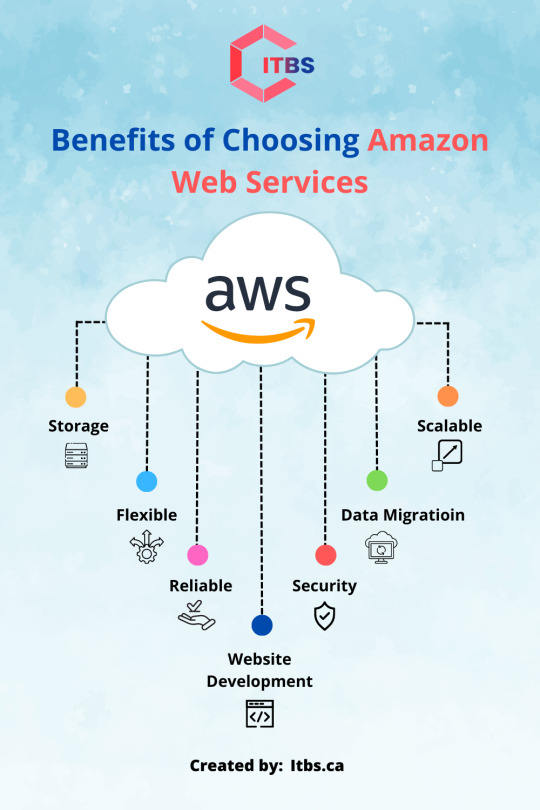
Amazon Web Services Advantages
The excellent option is Amazon Web Services (AWS). Amazon Web Services (AWS) is a fantastic option if you're searching for a dependable, secure, and effective cloud platform to host your business apps. One of the most widely used cloud computing platforms, AWS, has a number of benefits. We discussed AWS's many advantages in this image, along with the reasons why it is the ideal cloud computing platform.
1 note
·
View note
Text
Nubiral logra más de 100 certificaciones de AWS y se consolida como socio avanzado de consultoría
Continue reading Nubiral logra más de 100 certificaciones de AWS y se consolida como socio avanzado de consultoría
#Amazon Web Services#AWS#azure#Cybersecurity Architect Expert#Microsoft#Nubiral#Productividad#Socio de Consultoría Advanced#transformación digital
0 notes
Text
Unlocking Efficiency and Savings with AWS Managed Services
As businesses increasingly adopt cloud solutions to improve operations and reduce costs, AWS (Amazon Web Services) stands out as a leader in delivering scalable and reliable cloud infrastructure. However, effectively managing these cloud environments can pose challenges for organizations. This is where AWS managed services become invaluable, particularly for businesses in Australia and New Zealand striving to optimize their cloud strategies.
What Are AWS Managed Services?
AWS managed services encompass a suite of functionalities designed to simplify the management of AWS infrastructure. These services include:
Monitoring and performance optimization
Security management and compliance
Backup and disaster recovery
AWS cost optimization
By leveraging AWS managed services in Australia and New Zealand, businesses can ensure their cloud infrastructure is secure, efficient, and primed for growth, all while focusing on core objectives. From initial setup to scaling, these services streamline cloud operations, ensuring businesses maximize their investment in AWS.
Benefits of AWS Managed Services
1. Expert Management AWS managed services provide businesses with access to a team of certified AWS experts who specialize in configuring and maintaining cloud environments. Whether it's setting up an AWS Landing Zone, migrating workloads, or optimizing existing infrastructures, expert management ensures long-term success aligned with AWS best practices.
2. Enhanced Security Data security is paramount in today’s digital age. AWS managed services ensure continuous monitoring, regular audits, and compliance with industry standards to protect sensitive business data. Businesses in Australia benefit from robust security frameworks tailored to their unique needs.
3. Scalability AWS managed services enable businesses to easily scale resources up or down, ensuring they only pay for what they use. This flexibility is crucial for handling fluctuations in demand, especially for businesses in Australia and New Zealand, where market dynamics can change rapidly.
4. Focus on Innovation With AWS experts handling day-to-day operations, businesses can dedicate internal resources to innovation and strategic initiatives. This agility allows organizations to launch new services, improve customer experiences, and stay ahead in competitive markets.
5. Cost Efficiency A key advantage of AWS managed services is AWS cost optimization. AWS consultants analyze resource usage, eliminate inefficiencies, and recommend cost-saving strategies like implementing auto-scaling, reserved instances, and proactive cost monitoring. These measures significantly reduce operational costs while ensuring businesses get the most from their cloud investments.
Funding and Credits Options for AWS
AWS offers funding programs that further enhance the value of managed services, helping businesses in Australia and New Zealand reduce migration costs and scale efficiently:
Greenfield Customer Incentives: Ideal for businesses starting from scratch, enabling seamless cloud adoption.
POC (Proof of Concept) Funding: A low-commitment way to test AWS solutions before full implementation.
Free Cloud Assessment + Migration Funding: Comprehensive assessments and financial support for smooth transitions to the cloud.
Well-Architected Assessment Credits: Earn up to $5,000 in credits by addressing high-risk issues through a Well-Architected Review.
By leveraging these funding options, businesses can confidently invest in AWS managed services while minimizing upfront costs.
How Peritos Solutions Can Assist
At Peritos Solutions, we specialize in delivering AWS managed services across Australia and New Zealand to help businesses unlock the full potential of AWS. Our services include:
Setting up AWS Landing Zones for secure and efficient cloud environments
Implementing backup and disaster recovery solutions to ensure business continuity
Comprehensive AWS cost optimization strategies to reduce spending and maximize ROI
Regular security audits and Well-Architected Reviews to mitigate risks and enhance resilience
With our team of AWS-certified consultants, we provide tailored solutions to meet the unique needs of businesses, enabling them to scale confidently and efficiently.
AWS Core Competencies
As an Advanced Tier AWS Partner, Peritos Solutions holds certifications in 6 core competencies:
AWS EC2 for Windows Service Delivery Partner
AWS Lambda Delivery Partner
AWS DevOps Services Partner
AWS Amazon API Gateway Partner
AWS Control Tower Delivery Partner
AWS Well-Architected Partner
These credentials underscore our commitment to delivering excellence in AWS managed services.
Conclusion
In today’s dynamic digital landscape, AWS managed services provide businesses in Australia and New Zealand with the tools and expertise needed to thrive in the cloud. By partnering with AWS experts like Peritos Solutions, you can navigate cloud complexities with ease while achieving cost savings, enhanced security, and greater efficiency.
Let us help you optimize your AWS investments and drive innovation. With AWS managed services, your business can unlock unparalleled growth and success in the cloud.
0 notes
Text
Tamagotchi Uni Uses AWS, Amazon Web Services

The Tamagotchi Uni is the first Tamagotchi to ever connect to Wi-Fi, which enables it to receive over the area updates, programing changes, and more. How exactly is this all being done by Bandai Japan? Well Bandai has built the Tamagotchi Uni on the Amazon Web Services platform (AWS).
The details of this are actually outlined on a recent article on the Amazon Web Services blog. The blog post provided a detailed view on how Tamagotchi Uni use AWS to achieve secure and reliable connectivity and quickly deliver new content updates without leaving customers waiting.It details that Bandai Co., Ltd., the company responsible for product development and sales, adopted AWS IoT to realize the concept of globally interconnected Tamagotchi, enabling users to interact with each other.
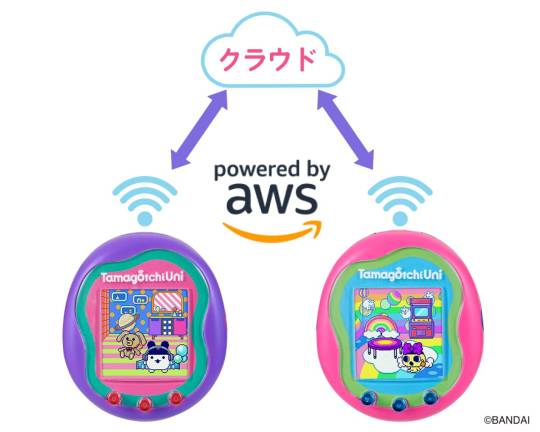
Bandai partnered with their cloud development partner, Phoenisys, Inc., to connect and manage million of Tamagotchi devices. One of the critical features was the over the air software updates which uses the jobs feature of AWS IoT Device Management to distribute the latest firmware across all Tamagotchi devices without causing any delays to customers.
To make Tamagotchi Uni IoT-enabled, Bandai establish the three key goals, which was implementing secure connections, scaling the load-balancing resources to accommodate over 1 million connections worldwide, and optimizing operational costs. The article even features the AWS architecture for the Tamagotchi Uni, which is interesting.
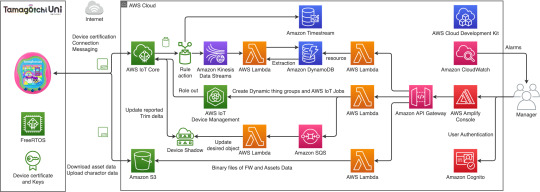
AWS IoT Core is used to manage the state of each Tamagotchi Uni device, which helps retrieve distributed items and content. AWS IoT Device Management is used to index the extensive Tamagotchi Uni fleet and create dynamic groups on the state of each device, facilitating efficient over-the-air (OTA) updates. FreeRTOS is used to minimize the amount of resources and code required to implement device-to-cloud communication for efficient system development. AWS Lambda is used to process tasks, delivering new announcements, and registering assets. Amazon DynamoDB is used as a fully managed, sever less, key-value noSQL database that runs high-performance applications at any scale. Amazon Simple Storage Service (Amazon S3) is used for object storage service, each of these data stores are used to manage the various resources within Tamagotchi Uni. Lastly, Amazon Timestream is used to accumulate historical data of user’s actions like downloading items and additional content.
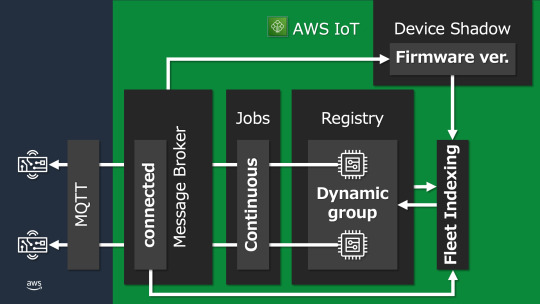
The article also details how Bandai is handling large scale firmware updates to Tamagotchi Uni devices which are executed at a rate of 1,000 units per hour which would have resulted in a delay for some devices. The team actually designed job delivery as a continuous job which automatically updates the devices under certain conditions. This is using fleet indexing that runs a query to see which devices meet the criteria for the update to be pushed out to it.
Lastly the article details how Bandai conducted system performance testing at a large-scale to emulate what it would be like after the device was released. They verified the smooth operation and performance of updates through their testing.
Be sure to check out the full article here on the Amazon AWS blog.
#tamapalace#tamagotchi#tmgc#tamagotchiuni#tamagotchi uni#uni#tamatag#virtualpet#bandai#amazonaws#amazon aws#aws#amazonwebservices#amazon web services#blog
14 notes
·
View notes
Text
#Cloud Consulting Services & Solutions#Cloud Consulting Services#Cloud Consulting Services in India#Cloud Services#Cloud Strategy & Consulting Service#Cloud Managed Services#AWS cloud consulting services#Devops consulting and managed cloud services#Cloud Software Consulting Services#Amazon Cloud Consulting Services#Cloud Consulting Services India#Microsoft Azure cloud consulting services#Best Service cloud consulting providers#AWS Cloud Services#custom software development companies#custom software development#custom software development company in India#custom software development company in noida#Website Development Company in Noida#Best web design company#Website Designing Company#Website Designing in Noida#Website Designing & Web Development Company in Noida#Best Website Design Company in Noida#Web Designing Company in India#Web Designing Company in Noida#website designing company in delhi ncr#custom software development services#software company in India#Software Development Company
0 notes
Text
UK Government signs off sweeping AI action plan
New Post has been published on https://thedigitalinsider.com/uk-government-signs-off-sweeping-ai-action-plan/
UK Government signs off sweeping AI action plan
.pp-multiple-authors-boxes-wrapper display:none; img width:100%;
AI is set to become a cornerstone of the UK’s vision for economic and societal renewal with a sweeping action plan unveiled today by Prime Minister Keir Starmer.
The government has committed to all 50 recommendations outlined in the ambitious AI Opportunities Action Plan created by Matt Clifford CBE, tech entrepreneur and chair of the Advanced Research and Invention Agency.
“Our plan will make Britain the world leader,” declared Starmer. “That means more jobs and investment in the UK, more money in people’s pockets, and transformed public services. That’s the change this government is delivering.”
The plan positions AI as a key driver of national progress, aiming to revolutionise public services, boost productivity, and establish the UK as a global leader in the field.
Chris Lehane, Chief Global Affairs Officer at OpenAI, said: “From the locomotive to the Colossus computer, the UK has a rich history of leadership in tech innovation and the research and development of AI.
“The government’s AI action plan – led by the Prime Minister and Secretary Peter Kyle – recognises where AI development is headed and sets the UK on the right path to benefit from its growth. The UK has an enormous national resource in the talent of its people, institutions, and businesses which together can leverage AI to advance the country’s national interest.”
A plan to unlock economic potential
The economic benefits of AI adoption form a central tenet of the government’s strategy. The International Monetary Fund estimates that embracing AI could increase productivity by 1.5 percentage points annually. Over a decade, this could add up to £47 billion in economic gains per year, according to Treasury calculations.
The strategy aims not only to grow the economy but to create tangible benefits for citizens.
Dr Jean Innes, CEO of the Alan Turing Institute, said: “This plan offers an exciting route map, and we welcome its focus on adoption of safe and responsible AI, AI skills, and an ambition to sustain the UK’s global leadership, putting AI to work driving growth, and delivering benefits for society.
“We share these ambitions and look forward to working with the government, universities, industry and civil society to shape the future of these technologies to support the UK’s success and improve people’s lives.”
Three major companies – Vantage Data Centres, Nscale, and Kyndryl – have already pledged a combined £14 billion in investments, creating 13,250 jobs across the country and reinforcing confidence in the UK’s AI potential. This adds to the £25 billion in commitments secured at last year’s International Investment Summit.
Vantage Data Centres is set to invest over £12 billion in UK data centre projects, including one of Europe’s largest data centre campuses in Wales. Meanwhile, Kyndryl will establish a new tech hub in Liverpool—creating up to 1,000 AI-related jobs. Nscale plans to back UK data centre infrastructure with a $2.5 billion investment, which includes the construction of the nation’s largest sovereign AI data centre in Essex by 2026.
Alison Kay, VP for UK and Ireland at Amazon Web Services (AWS), said: “At AWS, we’ve seen first-hand the benefits that digital technologies like AI can bring, and that’s why we’ve announced plans to invest £8 billion over the next five years building, operating, and maintaining data centres in the UK.
“By putting close industry collaboration and public-private partnership at the heart of the government’s agenda, every citizen, community and business in every region of the UK will have the opportunity to realise the benefits of AI, and thrive and grow.”
Zahra Bahrololoumi CBE, CEO of Salesforce UK and Ireland, added: “Businesses in the UK are in a prime position to fully unlock the opportunities of AI, thanks to a strong innovation culture and risk-based laws. That is why Salesforce chose the UK as the location of its first-ever AI Centre, building on our commitment to invest $4 billion in our UK operations to harness the transformational power of AI.”
Transforming public services
AI is already being deployed within UK hospitals, helping to modernise the NHS by diagnosing conditions such as breast cancer more swiftly, improving care for non-verbal patients, and expediting patient discharges.
“NHS datasets could be invaluable for impactful AI innovations in healthcare,” said Dr Bilal, Professor of Applied AI and Technology Ethics at Birmingham City University. “But they remain largely inaccessible to many researchers due to prohibitive costs and logistical hurdles.”
“Initiatives like NHS Secure Data Environments are a great start but must be made more affordable, or ideally free, for academic institutions.
Beyond healthcare, the government is betting that broader adoption of AI could achieve similar efficiencies in other public sectors. For instance, the plan highlights its potential to reduce administrative workloads for teachers, speed up planning consultations to facilitate new housing developments, and even identify potholes on roads via AI-enhanced cameras to expedite repairs.
The new strategy introduces AI Growth Zones, designed to accelerate the development of critical infrastructure. These zones will not only expedite planning permissions but also ensure dedicated energy connections to power AI projects. The first such zone will be established in Culham, Oxfordshire.
Building AI infrastructure
Supporting the UK’s AI aspirations requires significant investment in infrastructure. The plan includes:
A twentyfold increase in public compute capacity, with immediate work commencing on a new supercomputer to support AI advancements.
The creation of a National Data Library, designed to safely unlock the potential of public data to fuel AI innovation.
The establishment of a dedicated AI Energy Council, chaired by the Science and Energy Secretaries, to address the energy demands of AI development. This aligns with the government’s goal of becoming a clean energy superpower.
A new government team tasked with developing the UK’s sovereign AI capabilities.
The government also aims to provide stability for businesses by balancing the dynamism of the US and the regulatory guardrails seen in the EU.
Science, Innovation, and Technology Secretary Peter Kyle said the UK would leverage its unique strengths: “We already have remarkable strengths we can tap into when it comes to AI—building our status as the cradle of computer science and intelligent machines and establishing ourselves as the third largest AI market in the world.”
Reservations and risks with the AI action plan
While the ambitious plan has been met with enthusiasm by many, industry experts caution against overlooking the potential risks posed by unregulated AI deployment.
Dr Pia Hüsch, Research Fellow in Cyber, Technology and National Security at RUSI, commented: “Labour’s AI Opportunities Action Plan has economic growth as the top priority, shifting focus away from the previous government’s priorities around AI safety and regulation.
“While the focus on investing in infrastructure such as computing power and a national data library is welcome, the UK Government must not forget risks posed by AI technologies or the international partnerships that are needed to secure long-term benefit from AI technologies.”
Similarly, Deryck Mitchelson, Global Chief Information Security Officer at Check Point Software, expressed concerns about security and ethics: “AI integration without airtight security measures will only amplify these risks. External oversight of AI models and training datasets is essential—not optional.
“We need built-in equality, ethics, and a transparent framework to measure outcomes and prove these systems genuinely enhance performance, not just cut costs.”
Mitchelson warned that hasty deployment could erode public trust in AI-driven services and deepen inequality. He emphasised that the government must present this initiative as more than a cost-saving strategy and instead prioritise transparency, accountability, and robust safeguards.
The AI Opportunities Action Plan is a key pillar of the government’s Industrial Strategy and the first stage of a forthcoming Digital and Technology Sector Plan. It also ties into the government’s broader Plan for Change, aiming to ensure AI’s benefits are felt across every corner of the UK.
Chancellor Rachel Reeves MP underscored the initiative’s dual focus on economic growth and public service transformation: “AI is a powerful tool that will help grow our economy, make our public services more efficient and open up new opportunities to help improve living standards.
“This action plan is the government’s modern industrial strategy in action.”
As the UK accelerates efforts to harness AI, it faces the dual challenge of staying ahead in the global race for innovation while ensuring the potential pitfalls of the technology are minimised. Today’s announcements mark a bold step forward, but the road ahead will require careful navigation.
See also: Sam Altman, OpenAI: ‘Lucky and humbling’ to work towards superintelligence
Want to learn more about AI and big data from industry leaders? Check out AI & Big Data Expo taking place in Amsterdam, California, and London. The comprehensive event is co-located with other leading events including Intelligent Automation Conference, BlockX, Digital Transformation Week, and Cyber Security & Cloud Expo.
Explore other upcoming enterprise technology events and webinars powered by TechForge here.
Tags: ai, artificial intelligence, economy, europe, government, infrastructure, plan, strategy, uk
#000#250#ADD#adoption#ai#ai & big data expo#AI adoption#AI development#AI Infrastructure#AI innovation#AI integration#AI models#ai safety#ai skills#Amazon#Amazon Web Services#amp#Announcements#applied AI#Articles#artificial#Artificial Intelligence#automation#AWS#betting#Big Data#billion#breast cancer#Britain#Building
0 notes
Text
Virtual Private Cloud (VPC) Flow Logs in Amazon Web Services (AWS) is an indispensable feature for developers, network administrators, and cybersecurity professionals. It provides a window into the network traffic flowing through your AWS environment, providing the visibility needed to monitor, troubleshoot, and secure your applications and resources efficiently.
2 notes
·
View notes
Text
AWS представляет инструмент для борьбы с галлюцинациями ИИ
New Post has been published on https://er10.kz/read/it-novosti/aws-predstavljaet-instrument-dlja-borby-s-galljucinacijami-ii/
AWS представляет инструмент для борьбы с галлюцинациями ИИ

Amazon Web Services (AWS) объявила о создании инновационного инструмента для предотвращения так называемых «галлюцинаций» искусственного интеллекта (ИИ). Эти ошибки, возникающие из-за некорректной работы моделей ИИ, становятся все более серьезной проблемой для бизнеса, который все чаще полагается на генеративные технологии для выполнения бизнес-процессов.
Инструмент, представленный на мероприятии AWS re:Invent 2024, получил название Automated Reasoning. Он является частью платформы Amazon Bedrock Guardrails, которая предназначена для обеспечения точности и надежности моделей генеративного ИИ.
Главной целью Automated Reasoning является предотвращение фактических ошибок, вызванных галлюцинациями. Система проводит перекрестную проверку ответов ИИ с данными, предоставленными клиентами. Если возникает несоответствие или неопределенность, ответ возвращается в модель для доработ��и.
Дополнительно инструмент анализирует, каким образом модель пришла к своему выводу, и сравнивает этот процесс с исходной информацией. Клиенту предоставляется скорректированный ответ вместе с первоначальным, чтобы он мог оценить расхождения и внести необходимые изменения в настройки модели.
AWS видит огромный потенциал использования нового инструмента в различных отраслях. Например, в сфере здравоохранения это может помочь медицинским учреждениям предоставлять пациентам точные ответы на запросы о страховых полисах или процедурах.
По словам вице-президента AWS по ИИ и данным Свами Сивасубраманиана, система Automated Reasoning станет неотъемлемой частью большинства приложений генеративного ИИ, особенно по мере их интеграции в бизнес-процессы.
Галлюцинации ИИ представляют собой серьезный вызов для индустрии, так как они могут приводить к финансовым потерям и подрыву доверия клиентов. AWS заявляет, что их инструмент позволит значительно сократить риски, связанные с такими ошибками, сделав генеративные модели более безопасными и эффективными.
0 notes